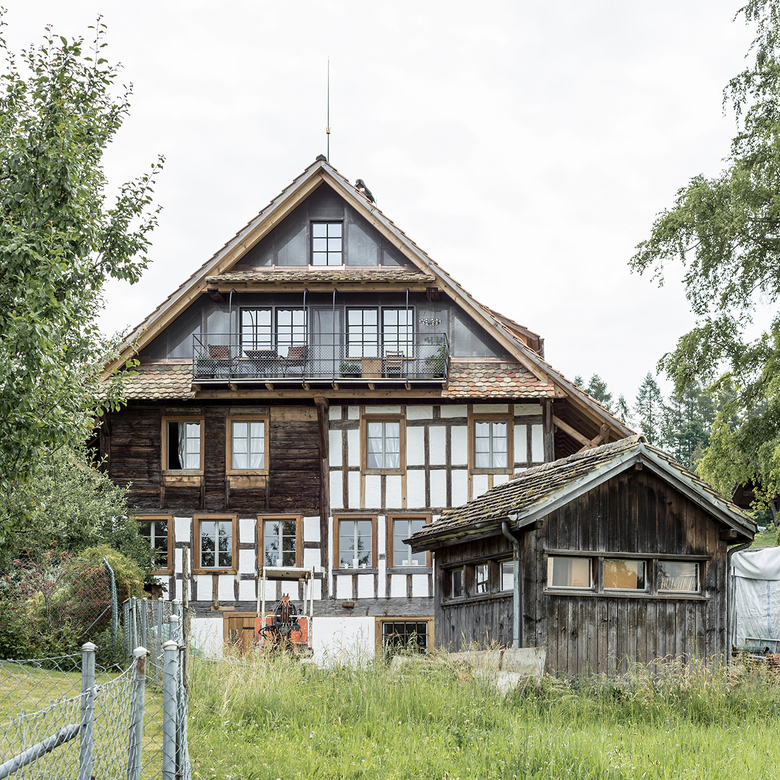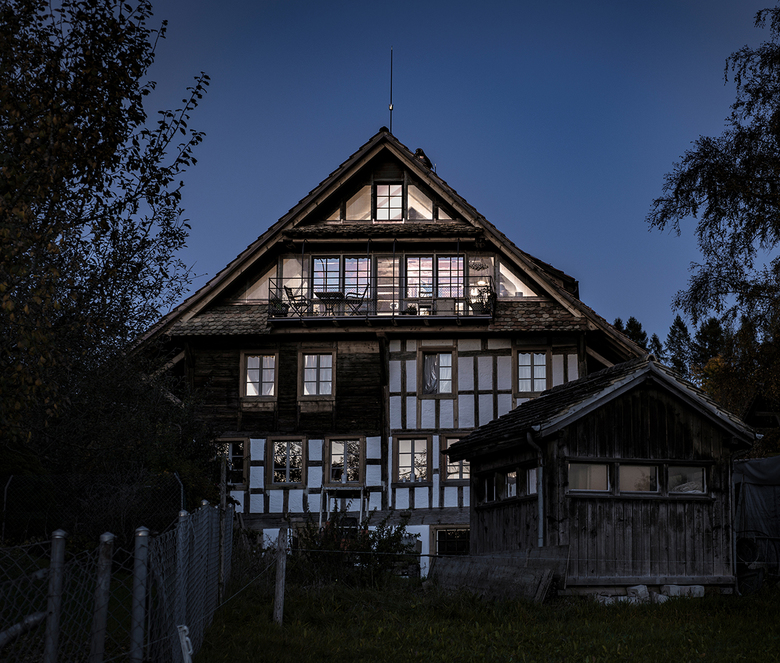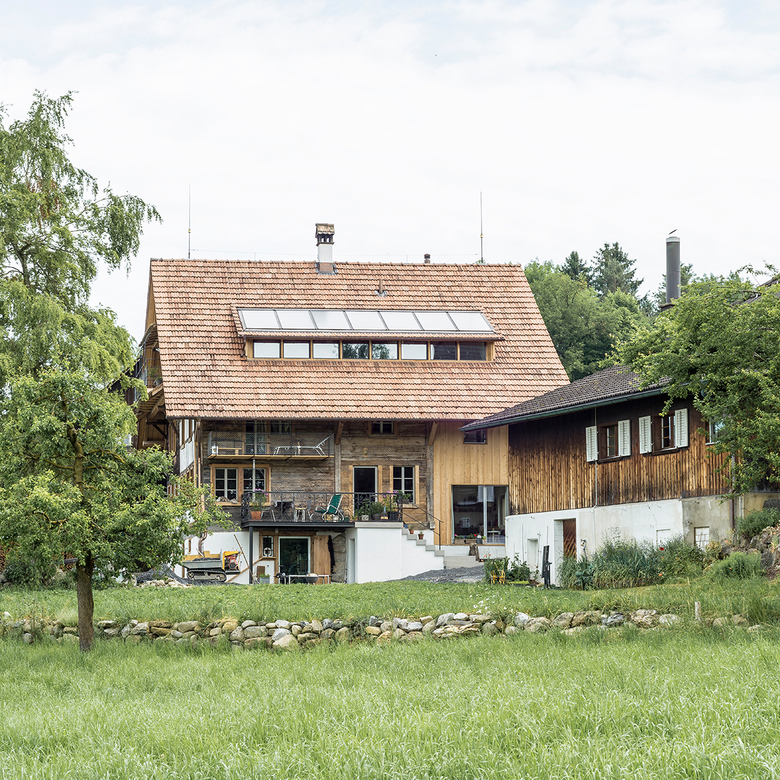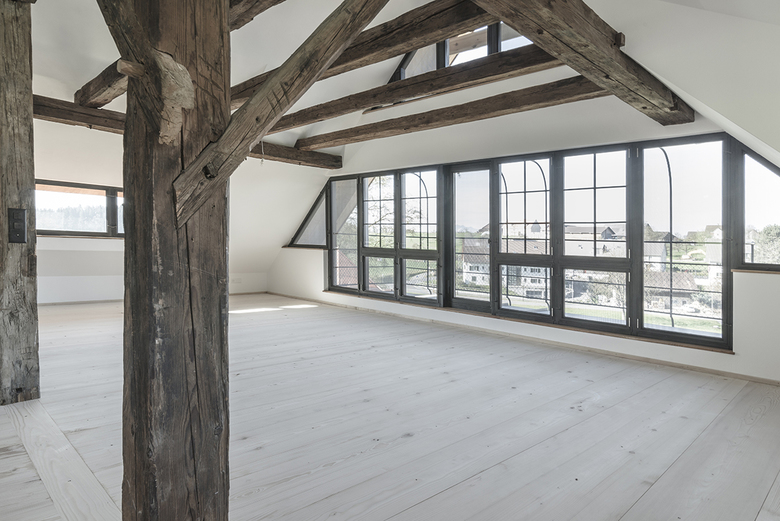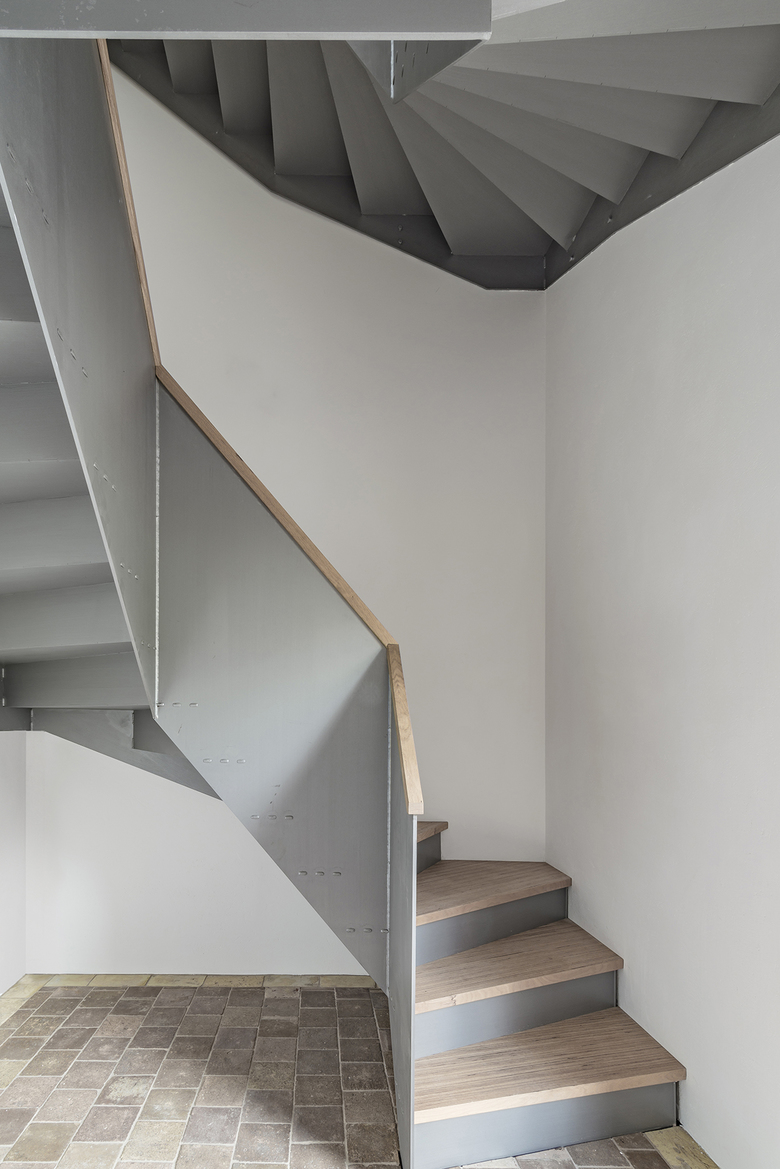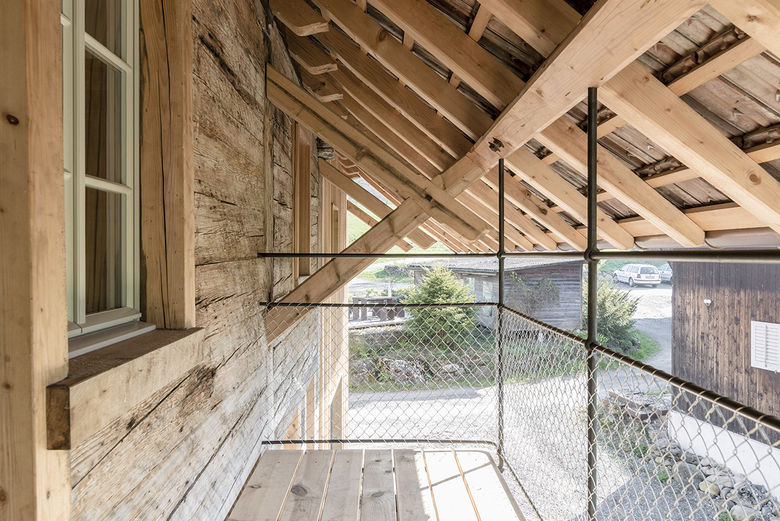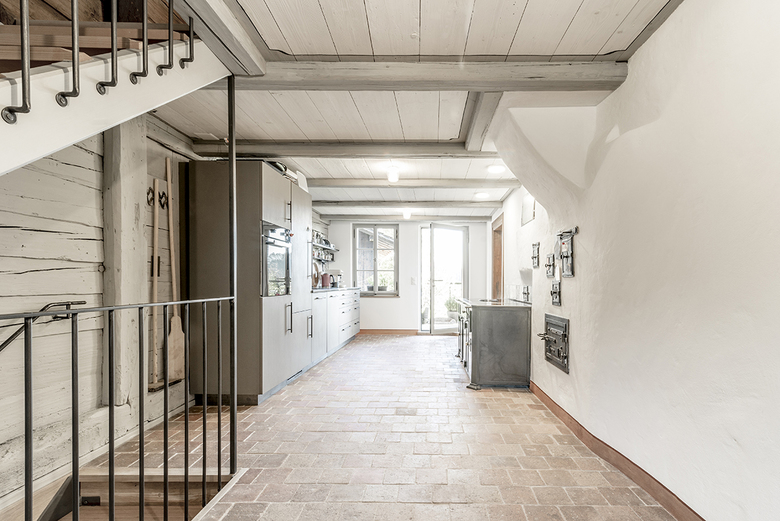Alte Kappelerstrasse
Back to Projects list- Year
- 2018
- Client
- Margrit & Moritz Häberling
The almost 300-year-old residential and farming building which is located in the village protection zone of Uerzlikon was converted into a three-family house. The building fabric was in poor condition and the structural intervention was therefore large. Due to its complex history and the high proportion of historical building material, it was clear from the beginning that this was an extraordinary construction task.
The challenge was to create contemporary living quality without changing the typology and character of the house. It was therefore decided to leave the original residential section and its central zone with the kitchen and fire place as they were. Furthermore a small apartment with large windows was built into the narrow economic part and the attic was converted into a loft-like apartment with two long roof dormers and a translucent gable facade. All three apartments thus retain their independent character.
I found inspiration mainly within the house and its surroundings. For example, the light gaps of the old panel cladding inspired me to design the new gable facade as a translucent surface, and when designing the façade of the old farming section, I took up the existing openings of different sizes, which were determined by the changing needs of the inhabitants. When planning the façade of the original residential section, I also examined in detail the existing proportions of the openings and the façade structure. The clear and homogeneous roof landscape of the neighbouring houses led to the decision to build two narrow and elongated dormers.
The site has strongly influenced the design. ‘Site’ in the sense of a conglomeration of existing farm houses, traditional construction style and the use of materials, colours and proportions. It is important to me that the newly interpreted house enters into a dialogue with its surroundings.
From the very beginning, the owner had a clear idea of the space programme. Three apartments were to be built into the house and rented to new tenants who were not yet known at the development stage of the project. Throughout the process, there was a constant and intensive dialogue with the owners. Their professional expertise, attention to detail and openness to unconventional solutions had a positive impact on the design.
This is the first historical object I have been able to rebuild and renovate. It was a great privilege to add new architectural qualities to this ancient building and it fortunately led to similar new commissions.
The interplay of modern and traditional materials has contributed to the success of the completed building; the raw perforated sheet metal of the gable façade, the galvanized metal windows and the simple steel staircase of the attic apartment in combination with the panelling of the historic living room, the wide wooden floor straps of local silver fir, the lime plaster of the framework and the knitted construction (Strickbau) of the facade.
